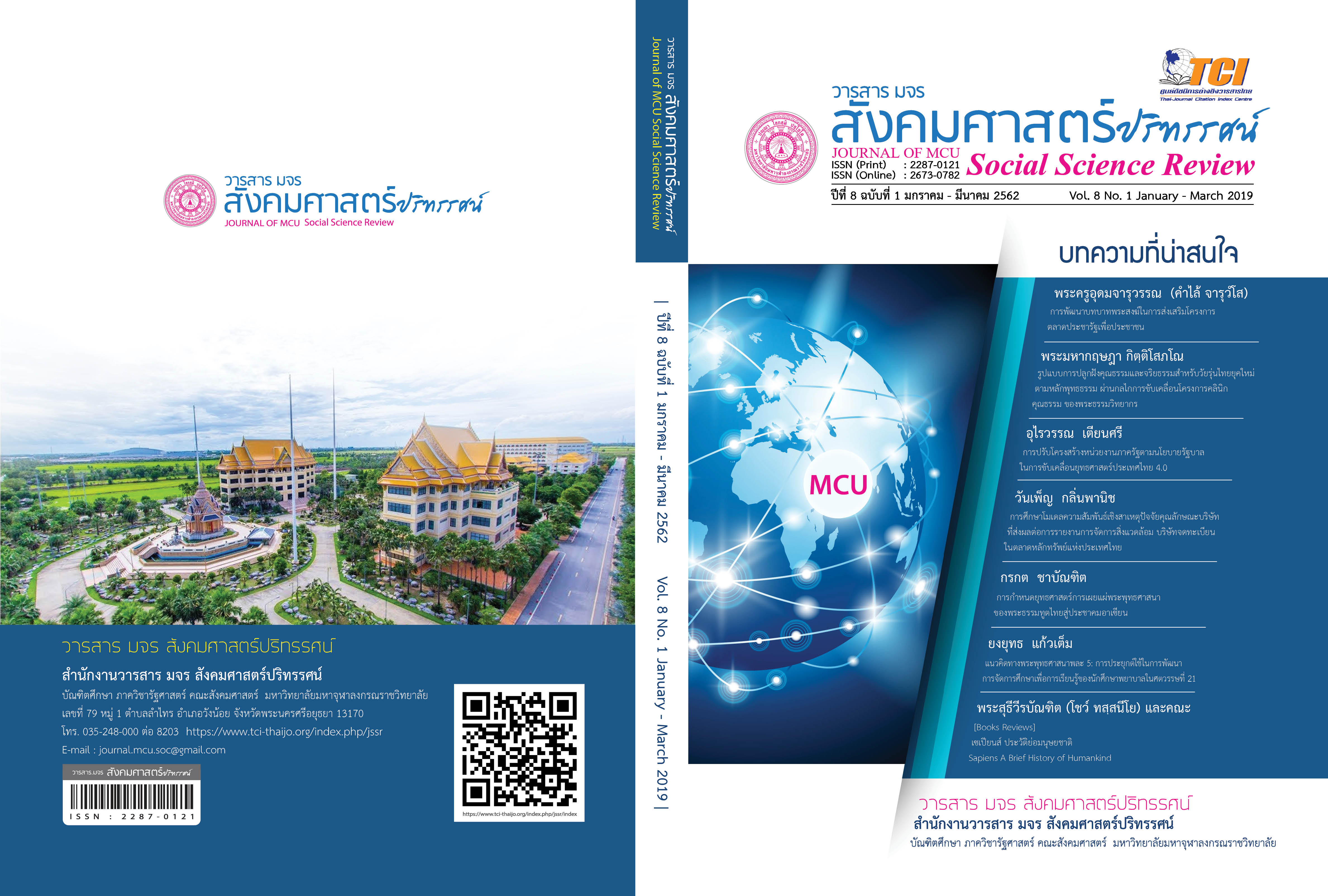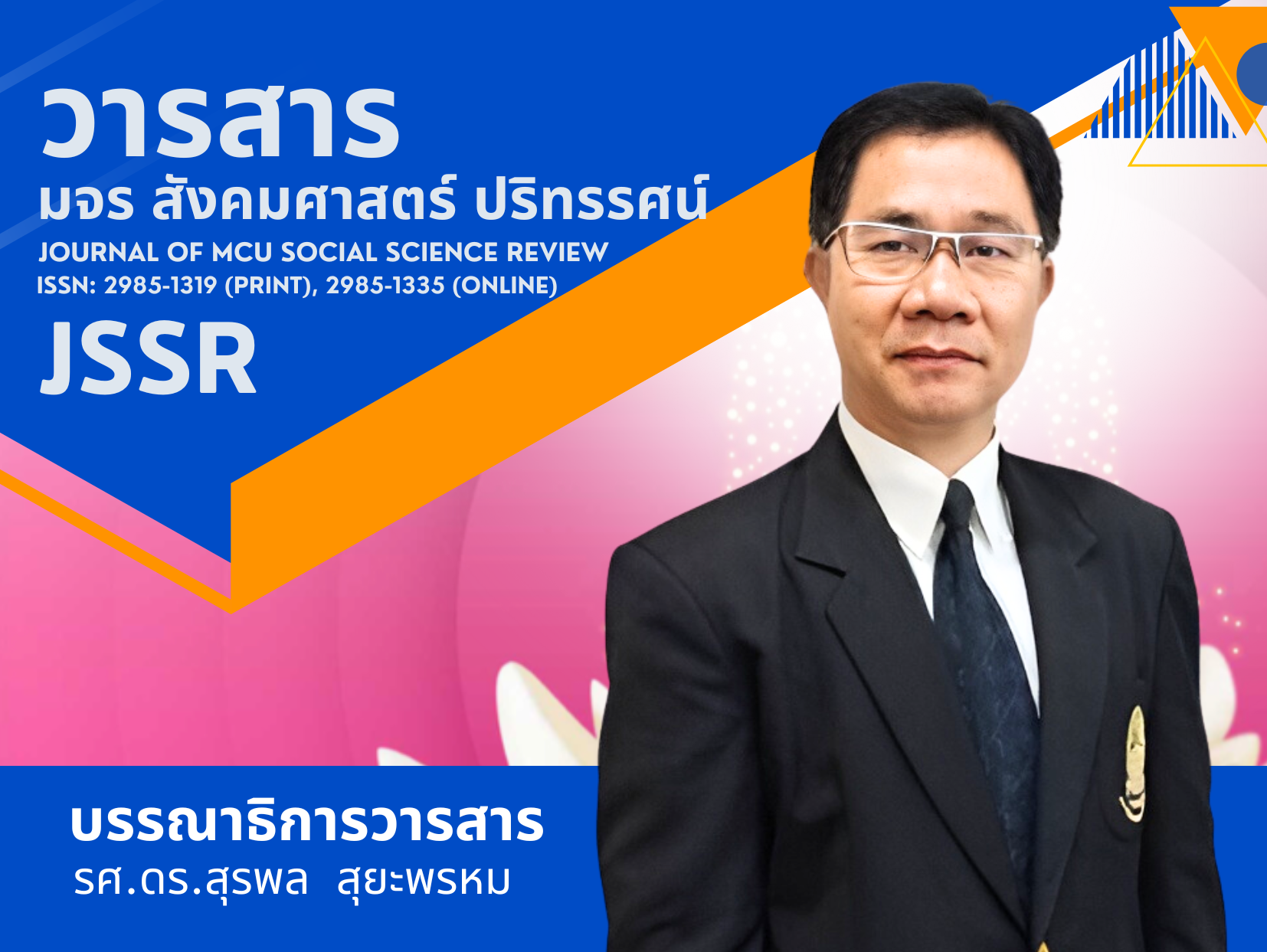THE RESTRUCTURING OF GOVERNMENT AGENCIES ACCORDING WITH GOVERNMENT POLICY TO DRIVE THAILAND'S STRATEGY 4.0
Keywords:
Restructuring, Driven Strategy, Thailand 4.0Abstract
Objectives of this research were to, 1) Study the state of government restructuring according to the government policy to drive the Thailand 4.0 strategy. 2) Study impact on Government Sector Restructuring in accordance with government policy to drive Thailand 4.0 strategy and 3) Propose restructuring government agencies, government policies to drive strategic Thailand 4.0. This study was a qualitative research by using a variety of storage methods.
Summarizing the findings in this research thus; 1) the readiness of the bureaucratic system as public administration must be readily available and result in the achievement of the state agency. 2) Regulatory and managing steps in the operation of the government should reduce the termination of the mission and dissolve unnecessary units. 3) Lack of Potential Personnel and professionalism were very important in the work of government agencies. So government officials and officials must have expertise. 4) The Corporate image and responsibilities of government officials should change culture, values and adapt to work to be accountable to the public. 5) The structure of the government at present was not flexible. Adherence to the framework of mandated by law. This was a constraint that restructuring organization and adjusting roles, to have clear responsibility to be able to driven strategy.
References
Bass, Bernard M., and Ronalald E. Riggio.(2006). Transformational Leadership. 2 nded. New Jersey:LawrenceEribaum Associates. Inc.
Hollander, E.P. Leadership in Dynamics : A Practical Guide to Effective Relationship. New York : Free Press, (1978).
House, R.J. and R. R. Mitchell. (1974). “Path-goal theory of leadership” Journal of
Contemporary Business. 3 (8) : 81 – 97.
Sirisamphan, T. (2017). Bureaucracy System Driving through Government 4.0. Office of the Public Sector Development Commission.
Lorsuwanrat. T. (2010). Knowledge Organization ; From Concept to Practice. Bangkok: Saphire Printing.
Kangsanan, K (2006). Decision Proceessing in Administration and General Conceptual Framework. Bangkok. Baanasankanpattana. (45-60).
Ketsuwan, R. (2013). New Public Management. Bhaphit Printing, Bangkok.
National Economics and Social Development Board, Offfice of (NESDB). (on-line) from http://prachatai.com/journal/2016/07/67040Sat, 2016-07-23 22:45) 20 March 2017.
Pinaisup, B. (2012) Trend of Organizational Management Changing and Role of Personal in Thailand Organization in 2027 A.D. Faculty of Public Administration, National Institute of Development Administration.
Public Sector Development Commission, Office of. (2013) Strategic Plan in Development of Thai Bureaucracy System (2013-2018 AD.). Vision Print and Media, Bangkok.
Ratanasak, T. (2012). Thai Bureaucracy Administration, Political Science and Public Administration, Chiengmai University.
Rakkhwamsuk, E.,(2016). Qualitative Research, Principle and Practice. Bangkok, DuanTula Printed .(in Thai)
Rakkhwamsuk, E.,(2017). New Public Service by Provincial Parliamentary Office, Humanities and Social Sciences Western University Vol.3 No.1 (January - April 2017).
Downloads
Published
How to Cite
Issue
Section
License
In order to conform the copyright law, all article authors must sign the consignment agreement to transfer the copyright to the Journal including the finally revised original articles. Besides, the article authors must declare that the articles will be printed in only the Journal of MCU Journal of Social Sciences. If there are pictures, tables or contents that were printed before, the article authors must receive permission from the authors in writing and show the evidence to the editor before the article is printed. If it does not conform to the set criteria, the editor will remove the article from the Journal without any exceptions.





